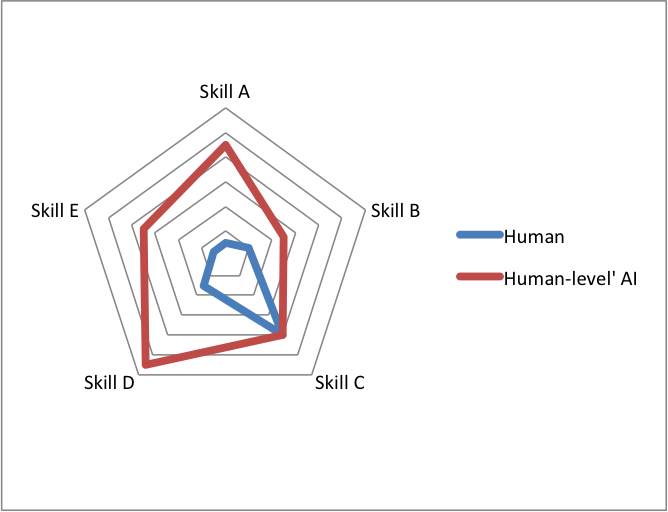An analysis of historical growth supports the possibility of radical increases in growth rate. Naive extrapolation of long-term trends would suggest massive increases in growth rate over the coming century, although growth over the last half-century has lagged very significantly behind these long-term trends.
Support
Bradford DeLong has published estimates for historical world GDP, piecing together data on recent GDP, historical population estimates, and crude estimates for historical per capita GDP. We have not analyzed these estimates in depth, but they appear to be plausible. (Robin Hanson has expressed complaints with the population estimates from before 10,000 BC, but our overall conclusions do not seem to be sensitive to these estimates.)
The raw data produced by DeLong, together with log-scale graphs of that data, are available here (augmented with one data point for 2013 found in the CIA world factbook, population data from the US census bureau via Wikipedia, and the website usinflationcalculator). Note that brief periods of negative growth have not been indicated, and that we have used what DeLong refers to as “ex-nordhaus” data, neglecting quality-of-life adjustments arising from improvements in the diversity of goods.

The data suggest that (proportional) rates of economic and population growth increase roughly linearly with the size of the world economy and population. Certainly, a constant rate of growth is a poor model for the data, as growth rates range over 5 orders of magnitude; rather, the data appear to be consistent with substantially superlinear returns to scale, such that doubling the size of the world multiplies the absolute rate of growth by 21.5 – 21.75 (as opposed to 2, which would be expected by exponential growth).
Extrapolating this model implies that at a time when the economy is growing 1% per year, growth will diverge to infinity after about 200 years. This outcome of course seems impossible, but this does suggest that the historical record is consistent with relatively large changes in growth rate, and in fact rates of economic growth experienced today are radically larger (even proportionally) than those experienced prior to the industrial revolution.
From around 0 to 500 CE, the predicted divergence occurs between 1700 and 2000, from 500 to 1000 CE it occurs around 2100, and from 1300 to 1950 it occurred in the later part of the 20th century.
In fact growth has fallen substantially behind this trend over the course of the 20th century; growth has continued but the acceleration of growth has slowed substantially (indeed reversing itself over the last 50 years). Moreover, it is unclear to us whether historically increasing returns to scale reflect returns to economic scale, or population scale, and if the latter then a profound slowdown seems likely–population growth rates seem to robustly fall at very high levels of development, and at any rate doubling times much shorter than 10-20 years would require radical changes in fertility patterns.1 That said, any such biologically contingent dynamics might be modified in a world where machine intelligence can substitute for human labor. Our impression is that this slowdown has been the subject of extensive inquiry by economists, but we have not reviewed this literature.
Implications
Overall, it seems unclear how much weight one should place on historical trends in predicting the future, and it seems unclear whether we should focus on very long-term trends of accelerating growth or short-term trends of stagnant growth (at least as measured by GDP). However, at a minimum it seems that extrapolation from history is consistent with extreme increases in the growth rate.
- “Most developed countries have completed the demographic transition and have low birth rates; most developing countries are in the process of this transition.[2][3] The major (relative) exceptions are some poor countries, mainly in sub-Saharan Africa and some Middle Eastern countries, which are poor or affected by government policy or civil strife, notably, Pakistan, Palestinian territories, Yemen, and Afghanistan.” – Demographic Transition, Wikipedia, 6 March 2019, https://en.wikipedia.org/wiki/Demographic_transition


